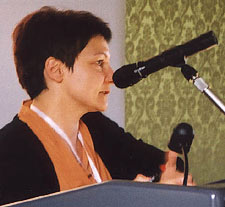Experimental Evidence of 4He Production Cold Fusion Experiment
Year: 2002
Keywords: Cold fusion, Palladium, Helium
We report the simultaneous production of excess enthalpy and of 4He in a one dimensional Palladium (Pd) stripe cathode electrolytically loaded with Deuterium (D), occurring when the stoichiometric ratio x=[D]/[Pd] exceeds 1. The excess heat is signalled by the local temperature rise, measured by a commercial Peltier element in good thermal contact with the thin film cathode substrate. In order to detect the very small amount of 4He expected in the gas mixture exiting from the cell, we remove effectively all non inert components of the gas mixture (especially hydrogen isotopes) with a non-evaporable getter (NEG) pump. Noble gases remain in the gas phase and they are periodically analysed by the mass spectrometer. The observation of a sizeable transmutation of Deuterium into Helium proves unequivocally that a nuclear transmutation process is the cause of the so called "Cold Fusion". From the amount of Helium, under the assumption of the conversion 2D??4He+23.8 MeV, one can estimate the produced power. We find that such power generally exceeds the one trivially estimated from the temperature rise. This mismatch is increasing with the produced power level and it is well understood by the non equilibrium thermal conditions in the immediate vicinity of the stripe and the consequent leakage of a major fraction of the produced heat by radiation. Indeed, further increasing the produced power, we have induced the actual melting of the thin cathode, proving that one has reached locally a temperature of 1828 K. The phenomenon has been reproduced several times: the quantitative outcomes of Helium in different experiments obviously depend on the level of Deuterium loading inside the Palladium matrix



